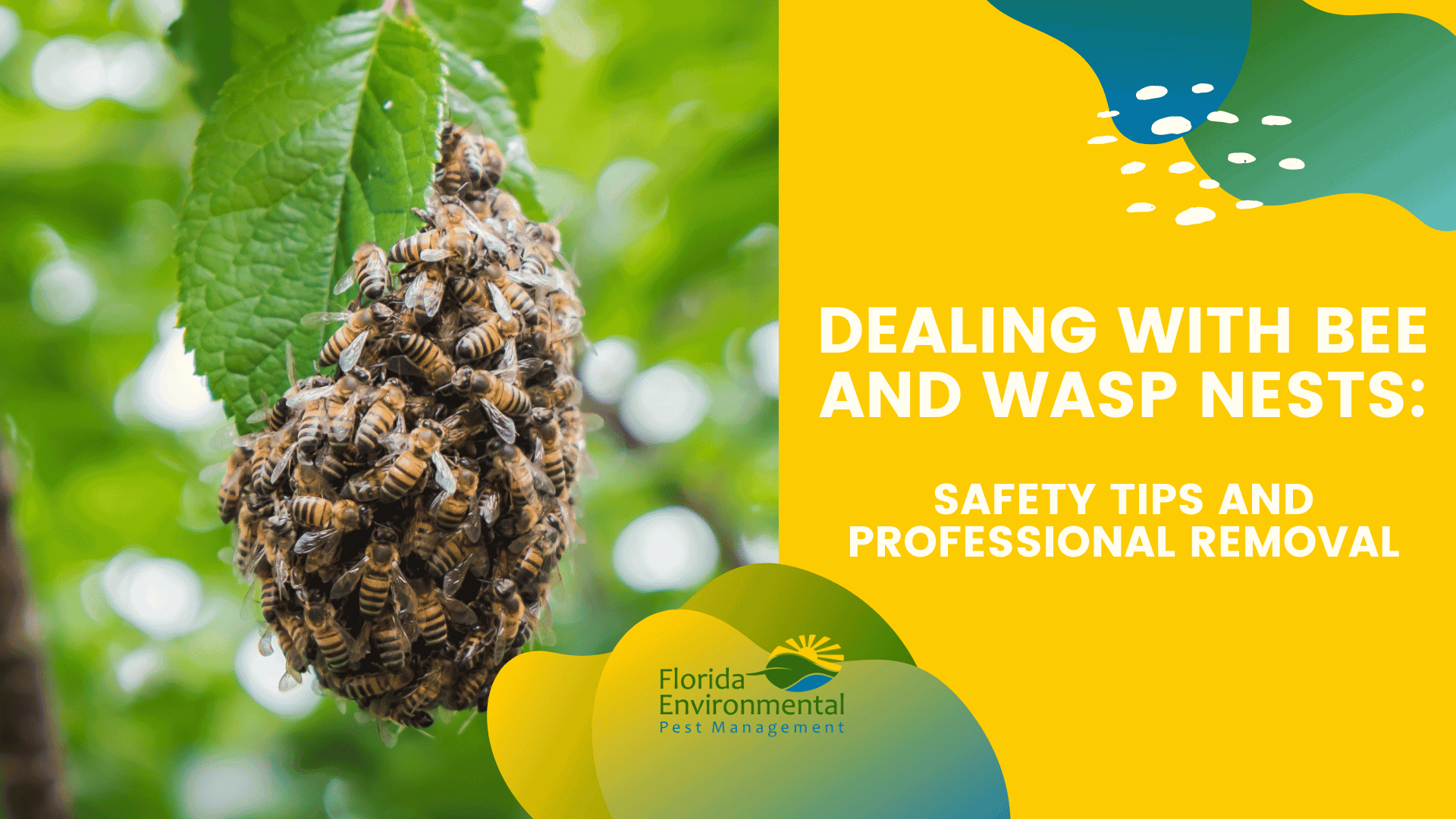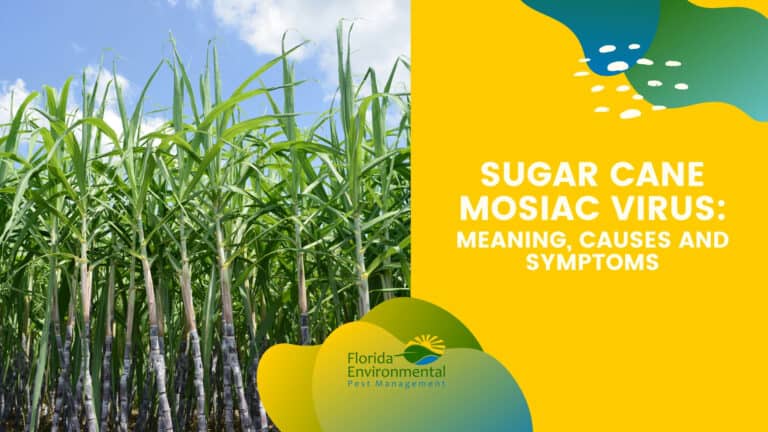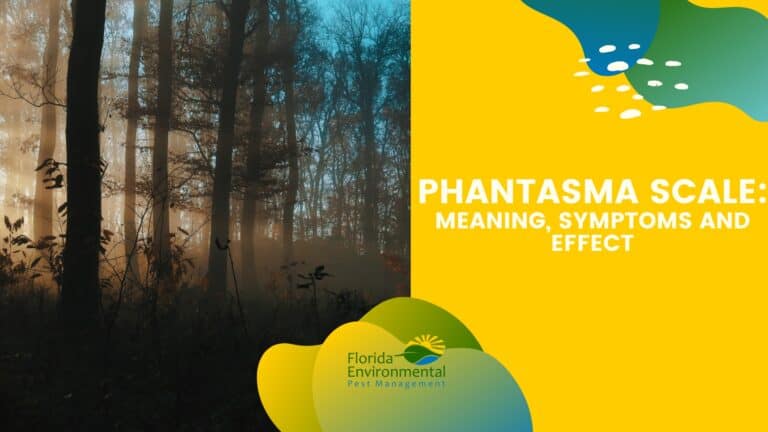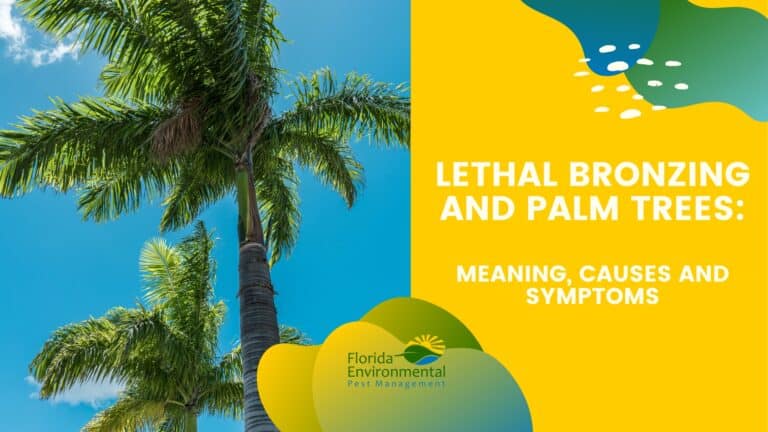Although bees and wasps can be unwelcome visitors, they are vital to maintaining healthy ecosystems. Without bees, we wouldn’t have the beautiful tropical landscape of fruits, flowers, and lush greenery that we enjoy in Florida. Even though wasps can be more aggressive than bees, they also play an important role in maintaining other pest populations. Bees and wasps can become a concern when their nests are close to our homes, as their stings tend to be painful and can cause allergic reactions. Let’s discuss the in’s and out’s of dealing with bee and wasp nests, from practical safety tips to the benefits of hiring professionals.
Identifying Bee and Wasp Nests
The first step in addressing the issue of bee or wasp nests is learning how to identify them. It’s important to remember that not all nests look the same and their appearances can vary widely based on the species of the insect and the location. Here are a few tips on how to correctly identify a bee or wasp nest on your property.
Common types of bee and wasp nests
There are a variety of bee and wasp species in Florida, each with unique nesting habits. Honey bees, for example, build intricate, waxy beehives with distinctive hexagon shaped-cells. Beehives can often be found in tree hollows, but they may also end up in walls, roofs, or other enclosed areas. Honey bee hives are easily recognized by their distinct hexagonal cells. Wasp nests, on the other hand, often resemble papery structures that have a round or football-like shape.
Identifying signs of a nest nearby
Besides spotting the nests themselves, other signs like seeing bees or wasps in a particular area of your property can indicate the presence of a bee or wasp colony. You might also notice an increase in their activity during dawn and dusk as these insects are often most active during these periods.
Safety Precautions
Bees and wasps can be very protective of their nests, and will sting if they feel threatened. Keep this in mind if you’ve found a bee or wasp nest on your property, as your safety is the top priority. Attempting to remove or relocate a nest without professional help is not advised. Multiple stings from bees or wasps can be very dangerous even if you are not allergic, so it’s best to remain cautious when dealing with these insects.
Once you’ve identified a bee or wasp nest, it’s crucial to maintain safety as your top priority. Both bees and wasps can become extremely protective and defensive of their nests, and improper handling can lead to painful and potentially dangerous stings. Don’t attempt to move, shake or damage these nests in any way. If you must be around the nests until professional help arrives, try your best to keep a safe distance, and don’t let your children or pets near the nests.
When to Call a Professional
Dealing with bees and wasps nests is a job best left to pest control professionals. If you have an infestation of bees or wasps on your property, it could be very unsafe to attempt to handle it with DIY methods. If someone in your household is allergic to bee or wasp stings, don’t hesitate to contact a professional. They’ll be able to deal with these insects safely and relocate the bee hives to a new, safe location in nature.
Once a professional has been called to deal with a bee or wasp nest, they will inspect your home and property to assess the location, size, and type of nest, as well as the species of wasp or bee. This assessment will determine the appropriate removal method. Professionals come equipped with specialized gear, including protective suits that prevent stings, and equipment that allows for safe removal or treatment of the nest.
Post-Removal Practices
Once a nest has been professionally removed, there are several steps you can take to ensure the area is safe and to prevent future nests from forming. There may still be a few stray insects buzzing around the area for a few days after the removal is complete. These are typically worker bees or wasps that were away from the nest at the time of removal. Over time, these stragglers will disperse when they realize the queen is no longer present.
Steps to take to prevent future nests
To prevent bees or wasps from setting up shop again, it’s important to make the area less appealing to them. Seal any cracks or openings in walls, roofs, or eaves where bees or wasps could establish a new home, and remove any food sources such as exposed trash or compost piles. Regularly inspecting your property for signs of new nests, especially during the spring and summer when bees and wasps are most active is another good precaution.
How to handle the area previously occupied by the nest
If the nest was inside a structure, like a wall or roof, you should properly clean and seal the area to avoid attracting other insects. Some insecticide residues can remain effective for a while, deterring re-infestation. If the nest was large, consider consulting a structural expert to assess any potential damage.
Florida Bee and Wasp Control
When it comes to insects like bees and wasps it’s important to use responsible pest control methods. Bees and wasps play a vital role in the thriving and balance of our ecosystem, which calls for an educated approach. Our skilled professionals are equipped with the right tools and knowledge to identify these insects and their nests, and can safely remove and relocate them while providing you with a thorough post removal protocol to help keep your home and property pest free year round. For preventative pest control or to target the source of an ongoing bee, wasp, or other pest problem, contact Florida Environmental Pest Management today.





